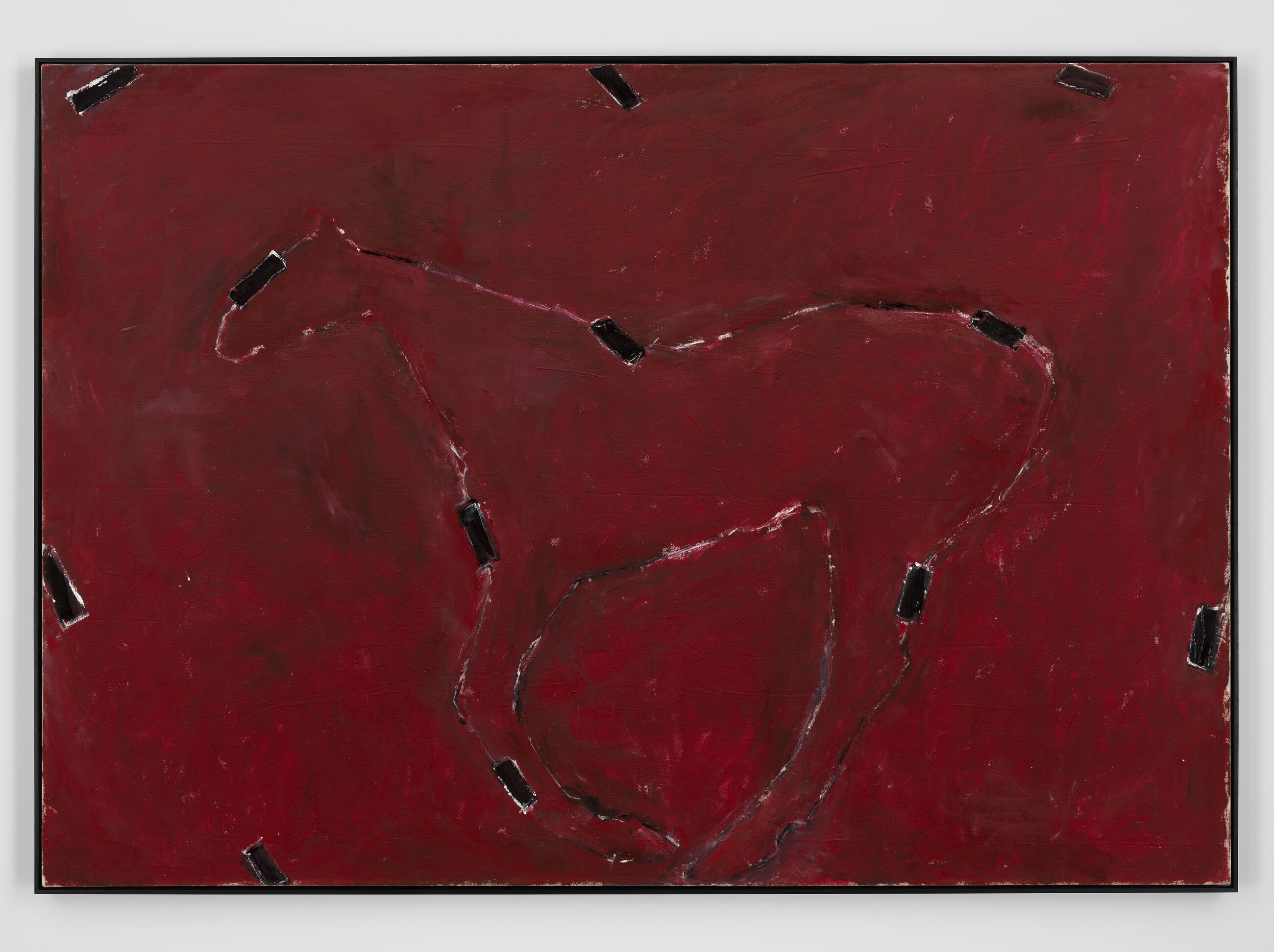Viewing Room
Susan Rothenberg
Black Blocks
In 1974 Susan Rothenberg transformed the history of painting with her singular and iconic body of horse paintings. ‘Black Blocks’ (1977)—first exhibited at P.S.1 Contemporary Art Center (now MoMA P.S.1)...
Nicole Eisenman
Coping
‘Coping’ (2008) is a masterful example of Nicole Eisenman’s allegorical paintings, which merge the autobiographical with art history and fiction to create a cutting critique of present-day social and political...
Felix Gonzalez-Torres
“Untitled” (Go-Go Dancing Platform)
At an undisclosed time, a lamé-clad go-go dancer ascends a light blue platform with a personal listening device. Surrounded by 48 illuminated lightbulbs, listening to music of their own choosing, they...
Meret Oppenheim
Das Auge der Mona Lisa (The Eye of Mona Lisa)
Exhibited at important institutions including the Kunstmuseum Bern, Schirn Kunsthalle Frankfurt and the Louisiana Museum of Modern Art, Humlebaek, Meret Oppenheim’s late painting, ‘Das Auge der Mona Lisa’...
Louise Bourgeois
Cell (Choisy Two)
‘Cell (Choisy Two)’ is from Louise Bourgeois’s series of remarkable and highly personal installations called the Cells. Inviting associations with the biological cell, imprisonment, or a place of solitary...
Philip Guston
Two Hearts
‘Two Hearts’ (1978) captures the intimacy, introspection and self-revelation of Philip Guston’s late canvases. In the 1970s, Guston’s wife Musa battled serious illness twice, profoundly impacting the artist,...
William Kentridge
I Look In The Mirror, I Know What I Need
‘I Look In The Mirror, I Know What I Need’ (2024) is a powerful new lithograph, related to William Kentridge's nine-episode video series ‘Self-Portrait as a Coffee-Pot,’ that premiered in April 2024 in...
Vilhelm Hammershøi – Interior in London, Brunswick Square
‘Interior in London, Brunswick Square’ (1912) is an extraordinary example of Vilhelm Hammershøi’s seminal late work. It was painted during Hammershøi’s final of several highly influential trips to London...
Rita Ackermann – American Iconology
Rita Ackermann’s ‘American Iconology’ (2024) belongs to a body of work that debuted at Hauser & Wirth New York in 2024. Titled ‘Splits,’ these works feature fragmentary figures and distinct registers that...
Louise Bourgeois
Spider I
Louise Bourgeois’s commanding spider sculptures are among the most iconic works of the past century. First depicted in a 1947 ink and charcoal drawing, this motif evolved into a prevailing theme in her...
Ed Clark
Green & Yellow-White
A remarkable example of Ed Clark’s late work, ‘Green & Yellow-White’ (2004) demonstrates the artist’s singular approach to abstraction, materiality and color. In this monumental painting, wide swathes...
Nicolas Party
Still Life
‘Still Life’ (2024) is a remarkable example of Nicolas Party’s alluring, imaginative still lifes. Party breathes new vivacity into this important historical genre, borrowing aesthetic flourishes from European...
1 / 18











